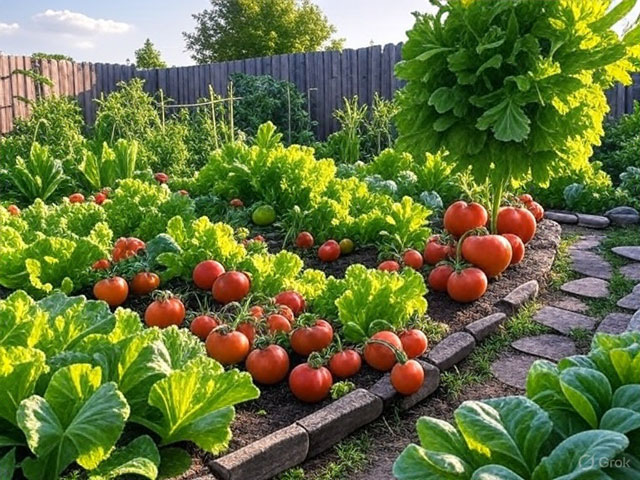Starting a backyard garden from scratch might feel overwhelming, especially if you’ve never planted more than a potted herb. But don’t worry! Gardening is one of the most rewarding and approachable hobbies you can take up. With the right guidance, even a patch of plain grass or compact soil can be transformed into a thriving, productive oasis.

Whether your goal is fresh vegetables, colorful blooms, or a peaceful retreat, here’s everything you need to know to start your backyard garden from the ground up.
Get an ebook on Backyard Gardening for Beginners
1. Assess Your Space and Set Your Goals
Before you touch a shovel, take a good look at your yard. Observe which areas get full sunlight for 6 to 8 hours, partial sunlight and complete shade throughout the day. Examine the type of soil. Is it clay-heavy, sandy, or loamy? You can test a small sample with a DIY soil test kit or send it to a local extension service. Avoid areas where water pools after rain. Good drainage is critical for healthy roots. Try to start in a small area of around 4×8 feet in the beginning.
Next, decide what you want to grow. Vegetables and herbs? Great for utility and sustainability. Flowers? Ideal for color and pollinators. Mixed-use? A blend of beauty and function.
2. Plan Your Layout
Sketch a simple garden layout on paper or use a garden planner app. Consider plant height (whether you want to plant taller ones in the back or center), spacing needs, access paths and rotation zones for future seasons. Decide whether you would plant in raised beds or in-ground rows? If you’re dealing with poor soil, raised beds or containers offer more control and less weeding.
3. Prepare the Soil
Great gardens start with healthy soil. First of all, clear the area by removing grass, weeds, and debris. Loosen the soil by digging 6-12 inches deep using a shovel or a garden fork. Next, amend and enrich the soil. Mix in compost, aged manure, or organic matter to improve fertility and texture. Finally, level and smooth the surface by raking it to prepare for planting.
4. Choose the Right Plants
For beginners, go with easy-to-grow, resilient plants. For example, if you’re considering to plant some vegetables, you can go with lettuce, tomatoes, peppers, radishes and zucchini. Likewise, basil, mint, rosemary and parsley can be a good choice for herbs. Easy to grow flowers may include marigold, zinnia, sunflower, cosmos. Be sure to choose plants that are best suited to your climate zone.
Related: Vegetables for Indoor Container Gardening
5. Plant Strategically
Follow spacing instructions on seed packets or plant tags. Plant at the correct depth and water immediately after. Group plants with similar water and sunlight needs together. Use mulch around plants to retain moisture and suppress weeds.
6. Water and Care Consistently
Water early in the morning to reduce evaporation and prevent disease. Deep, infrequent watering is better than shallow, daily watering. Monitor pests and diseases. Use natural remedies like neem oil or companion planting to reduce infestations.
7. Maintain and Enjoy
Weed regularly before they get out of control. Harvest frequently to encourage more growth. Consider keeping a garden journal to track planting dates, growth progress, and successes. You may want to install a rain barrel to conserve water. Planting native flowers nearby can help attract pollinators. You can reuse kitchen scraps for compost to feed your soil.
Creating a backyard garden from scratch isn’t just about growing plants. It’s about cultivating patience, awareness, and joy. Each seed you plant becomes part of a process that connects you with nature and your food. Even a modest garden can transform your backyard and your daily life. So roll up your sleeves, get your hands in the soil, and let your backyard become the garden you’ve always dreamed of!



